General Insurance Blogs, Articles & Updates by - Magma HDI
Have us call you
- RENEW YOUR POLICY
- BUY NEW POLICY
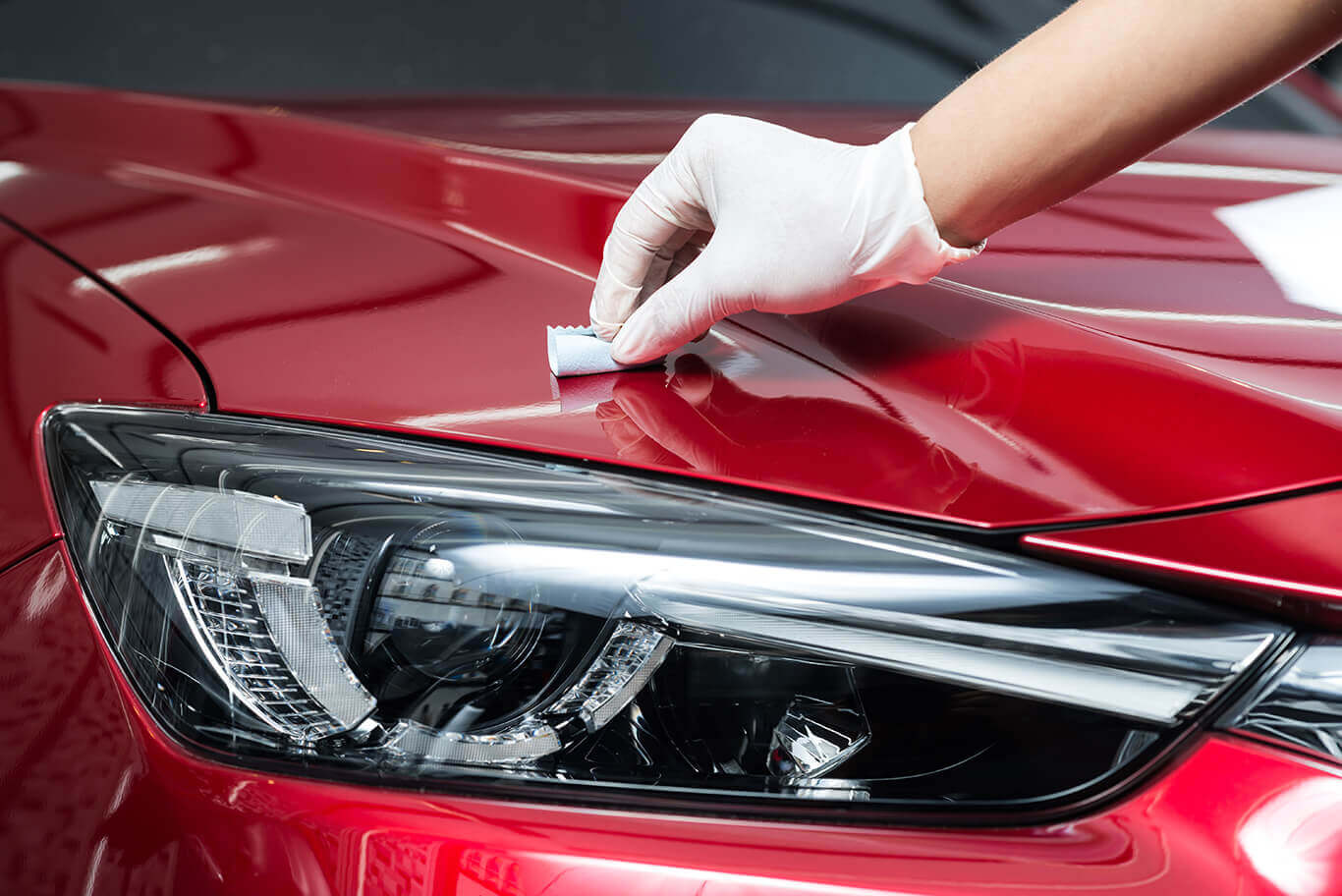
Keep your car in great shape!
Your car gets you safely everywhere you want to go, but it requires that you take good care of it in order for it to keep running. Some of these simple maintenance issues can actually result in an accident or injuries. Take the time to make sure these 10 things are checked regularly and maintained as needed and avoid a potential accident or claim.
Tip 1: Change the oil. Neglecting oil level checks and fresh oil changes will not do your car any favours.
Tip 2: Change the oil filter. Check the oil level once a month and replace the oil filter regularly.
Tip 3: Check your brake fluid. Check when transmission fluid and power steering fluid need to be replaced as well.
Tip 4: Check the tyre pressure each month. You should check your tyres regularly by ensuring that they are properly inflated and that the wheels are aligned. Not only will you get better mileage, but your tyres will last longer too.
Tip 5: Check the windscreen wipers. Make sure they are not damaged and are in a good working condition, as driving without proper visibility is dangerous.
Tip 6: Change the air filter. Keep your engine clean by regularly replacing the air filter.
Tip 7: Check the windscreen. Inspect the windscreen for small chips and scratches. These are reasonably cheap to repair, while replacing an entire windscreen is expensive.
Tip 8: Check your lights. This means indicator lights, hazard lights and headlights. Replace burnt out bulbs immediately.
Tip 9: Check the dashboard. Don't ignore the dashboard if there are flashing lights or the temperature gauge is suddenly extra hot. Stop as soon as it is safe and read the manual to make sure it is safe to drive further.
Tip 10: Protect the exterior of the car. A coat of good quality wax will ensure that your vehicle paint is protected. Apply the wax every six months.
Keep your car in good running condition and it will keep you safe and in control on the road. It takes a short amount of time to check these important functions, but can save money, fuel, and even lives in the long run. Make sure the functions of your car aren’t the only thing you’re checking. Get Car Insurance at the best price and protect your prized possession!

Get the peace of mind you deserve with one step
We all know that setting up a business and buying an asset takes a lot of time and toiling, it may be a car, your dream house or simply a household item.
For many, work and business is a doppelganger of their personal identity. Your office could have cash, valuables, goods and raw material, critical documents or intellectual property that in an event of a theft or burglary can leave you financially crippled.
Here’s what we have figured out through our truth lens!
Even though the crime rate in India is on the decline, it is still quite high at 379 crimes per lakh of the population as per data from NCRB (2016). Most urban business complexes now have better security systems and more personnel on board; however, most perpetrators in cases of thefts are known to be familiar faces. This makes it imperative for businesses to add a layer of security with a comprehensive burglary and theft insurance plan.
For the sake of insurance, theft and burglary are two separate categories, where burglary, unlike a theft, also accounts for forcible/ violent entry and/or armed robbery that puts the people, place and other valuables at risk.
Why is securing yourself against theft and burglary important?
A comprehensive protection plan can be purchased for your home, office, factory, warehouse, etc. The compensation from the insurer covers for any item that is stolen from the insured premises and also makes good any loss or damage caused to the premises on account of the said theft or burglary.
Any stock of goods, furniture, computers and electronics and other assets within the business premises are covered too. In fact Magma HDI’s Burglary Insurance Policy goes a step further and provides for reasonable coverage to clean up the premises and move any debris from the premises to the closest disposal site. It also reimburses for making good critical documents such as agreements and confidential business documents, on which sometimes the registration and stamp duty itself can run in to lakhs of rupees.
If you fear a repeated attempt at the theft or burglary, Magma HDI burglary policy also covers for the cost of temporary protection incurred for the safety of your employees and assets.
The first thing you need to do is to ensure that there are reasonable safety and security systems in place so as to minimize the risk. This will also have a direct impact on the insurance premium you will incur. The better your preparation, the lower the premium. The insurance will not cover for any loss arising out of an ‘inside job’ unless through forceful means.
Review your insurance requirements periodically, especially if you have different value of cash, goods/ raw material moving in and out of your office, new equipment/ machinery, critical R&D technology, etc. The value of your stocks and assets have a direct correlation to your premium.
The cost of insurance is a small price to pay for ensured business continuity, protecting your family and employees and securing your peace of mind.
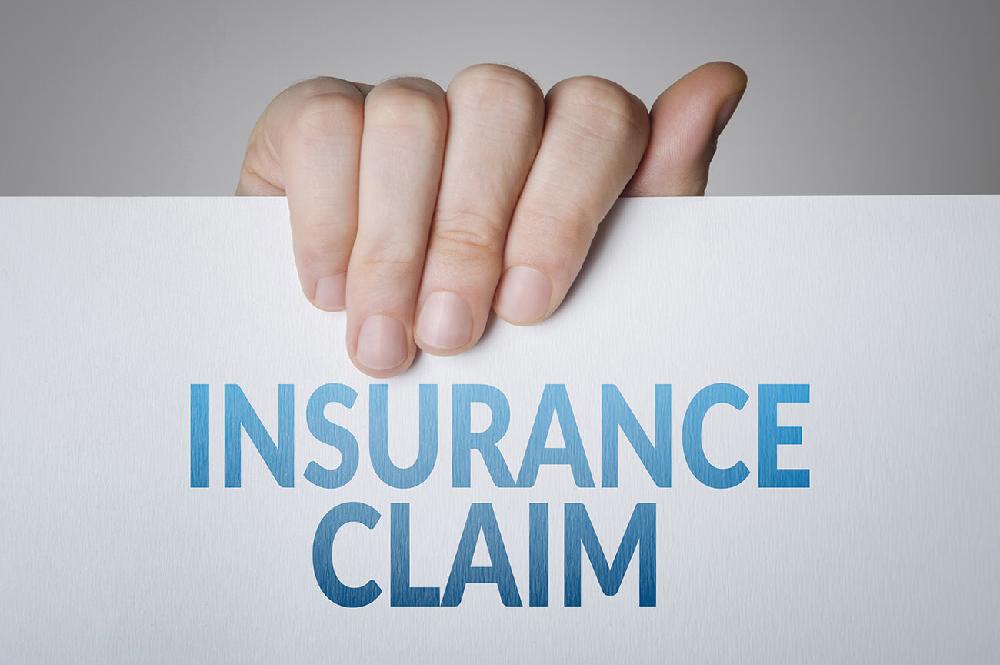
What is the claim settlement ratio?
Have you thought of your insurance claim getting rejected? Scary is’nt it?
Any individual taking an insurance policy would never think about their claim not being approved, but there have been numerous incidents of insurance claim rejection. Some of the reasons could be due to negligence on the part of the policyholder, but sometimes, it could also be because of choosing the wrong policy provider who looks for loopholes to avoid paying claims.
Claim settlement becomes especially important in the case of life insurance policy, where an entire family’s short-term sustenance may depend upon the claim amount.
What is Claim Settlement Ratio?
As the name suggests, the Claim Settlement Ratio is the number of claims the insurance provider has settled up until now. For instance, if the company has a claim settlement ratio of 80%, then that means that the particular company has settled 80 out of every 100 claims that were filed by policyholders.
Magma HDI has maintained an exceptional CSR of 94.1% in FY 17-18 compared to the industry average of 87.2%. With our convenient and efficient claim settlement process, we were able to ensure less than 30-day claim settlement for almost 87.17% of the total claims made in the year.
Why is the claim settlement ratio important?
It is essential to consider every aspect so you can take an informed decision before picking the right insurance provider and signing the policy papers. This becomes particularly important when taking life insurance, as, in the event of your untimely device, you will leave behind a financial security cushion for your dependents to fall back on.
The Claim Settlement Ratio is an indication of the likelihood of the policy provider to pay the claim. Companies that have a higher claim settlement ratio are automatically trusted higher as compared to companies with a lower ratio.
Few reasons for claim rejection:
- Withholding critical information at the time of taking the policy can seriously impact the likelihood of your claim getting settled as it affects the risk assessment – Can be written as tell the truth always! no matter what
- Not understanding or being unaware of the company’s terms and conditions could lead to complications or incorrect/incomplete information that could then lead to rejection. Therefore, make sure you understand the clauses and use the free-look period to ensure that you’ve made the right selection
- Faltering during the claim filing process is one of the key reasons for claim rejection. Therefore, you must thoroughly follow the process before filing your claim
Now that you know all about the Claim Settlement Ratio and how it impacts your chances of claim settlement, you can make an informed decision and choose the right provider.

How Magma HDI liability insurance makes you a responsible citizen?
It is hard to name a single businessman who hasn’t taken risks, but you will know many brave ones who trusted luck and risked everything. Truth be told, as a responsible business owner and citizen, one needs to be prepared with and Magma HDI Genaral Insurance Company offers a wide range of liability insurance policies that give you
1. Compensation for damage/loss of property or human injury
2. Covers your legal liabilities towards damage to any third party, along with the legal costs and expenses incurred by the insured.
3. It applies to both industrial and non-industrial establishments.
4. Compensation for damage/loss of property or a human injury caused due to defects in product manufacturing
5. Even after ensuring the highest quality standards and assessment parameters, a manufacturing defect in products is still possible and can cause mishaps.In such instances, Magma HDI Liability Insurance covers the liability to a third party.
6. Compensation for damage caused due to human negligence
Be it any professional– doctor, engineer or lawyer – involuntary errors and omissions could seriously impact their customers’ health, well-being, or financial stature. Liability insurance will take care of any liabilities that may arise due to negligence while executing your responsibilities.
Smart and trusted businesses quickly compensates loss or damage that might occur during the regular course of business as they are backed by their Liability Insurance policies and so can you CLICK HERE for buying Magma HDI’s liability insurance Policy.
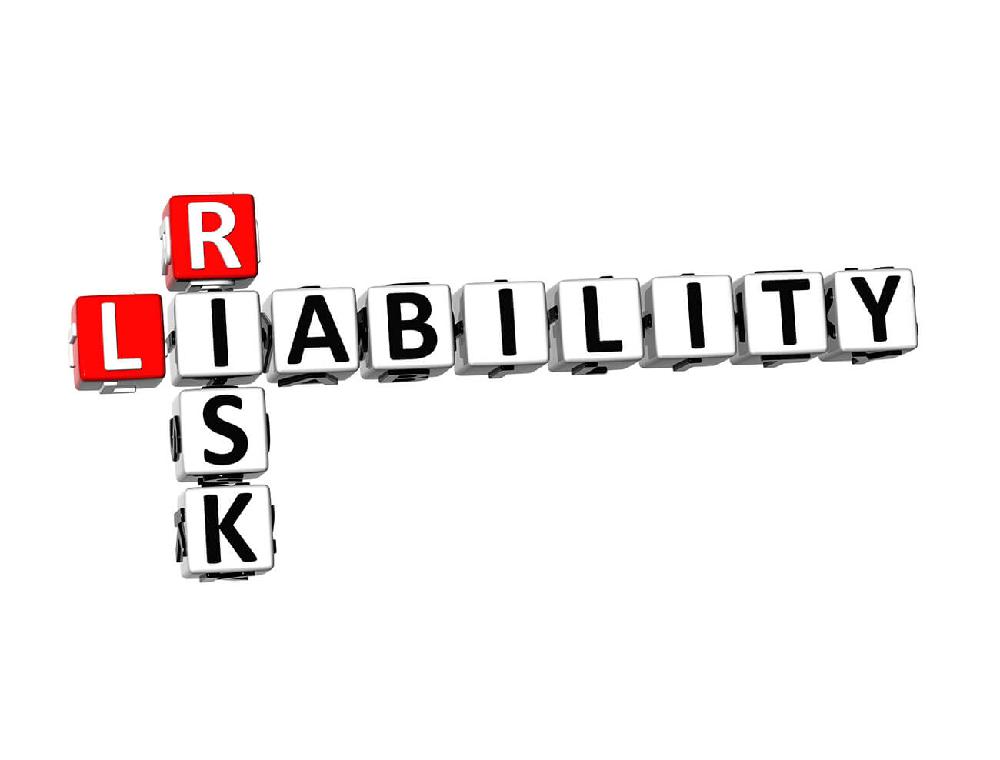
7 things you need to know about public liability insurance
Accidents happen. Sometimes due to negligence and sometimes due to sheer bad luck.
What if a customer slips and falls at your premise and breaks a bone? Or purchases an electrical device from you which causes a short circuit at their home resulting in a fire? In either of these incidents, as a business owner, you can be liable to compensate for the loss/damage to life, property and the legal fees a third party incurs.
An Example
A famous incident that highlights the need for public liability insurance is the 'hot coffee lawsuit' of 1992. The plaintiff, 79-year-old Ms Liebeck accidentally spilt hot coffee on her lap, (while in her car) purchased from a renowned fast-food retailers outlet. She spent eight days in the hospital because of third-degree burns, had to undergo a skin graft and two years of follow up treatment. Her attorney argued that the coffee served at 82-88 degrees was significantly hotter than what other outlets served (60 degrees) and was a burn hazard even if consumed immediately.
The jury initially awarded Ms Liebeck US$160,000 as compensation and coverage for medical expenses in addition to US$2.7 million in punitive damages. After a prolonged court battle and multiple appeals, the parties settled out-of-court in 1994 for an undisclosed amount, said to be under US$600,000.
Most businesses do not have the time, resources and deep pockets to weather such lawsuits.
Thus, every business needs to protect its interests and that's what a Public Liability Insurance can help them do. Here are six things you should know about Public Liability Insurance (PLI) in India:
1) Who needs it
Enterprises that regularly entertain the public such as restaurants, shops, educational institutes, sporting areas, etc. should get public liability insurance. It also applies to businesses that work in public spaces or private homes such as building contractors, electricians, etc.
2) Scope of coverage
The insurance covers the cost of damage/medical treatment and legal fees if any third party sues your business. This includes customers, vendors, and general members of the public excluding your staff (that comes under workers compensation).
3) Domicile of coverage
The coverage is not geographically restricted. It covers incidents at your premises or those at a customer/ clients location.
4) Cost
The cost of your PLI depends on the nature, size and scale of your business. Enterprises that deal with hazardous substances or have multiple outlets/ franchisees, etc. will have to pay more due to greater probability of a mishap.
5) Customizations
You can customize the coverage after assessing your needs. For example, a small café would probably need a considerably lower cover than a 5-star hotel complex. You may also choose add-ons for extra protection. For instance, the act of gods covers situations such as floods, lightning etc. which end up being frequent causes of dispute.
6) Legal Requirement
Even though businesses are not legally bound to opt for a PLI, certain lease agreements or trade associations make it binding on the lessee/partner to obtain the insurance. Many private parties too may not contract services to a business or tradesman without a PLI.
7) Exclusions
Like any other insurance policy, Public Liability Insurance In India is also subject to exclusions. Some common exclusions of insurance providers in India are- disputes related to pollution, slander, fines and penalties. Please refer to your plan's policy wordings for a better understanding of the same.
Many-a-times businesses fail to realize the damage to goodwill due to an incident is greater than the cost of financially alleviating the situation. To know how you can secure your business and do right by all stakeholders, have a look at what Magma HDI has to offer.
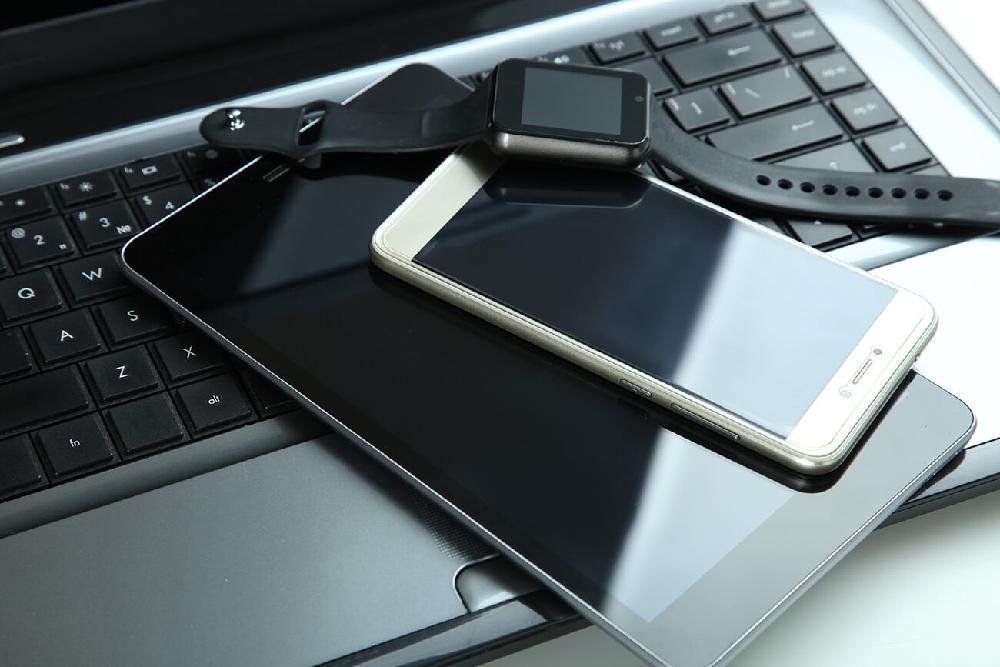
Did you know you could safeguard your precious gadgets/equipment with this one step?
Connectivity has become the fourth pillar of our rations today. Each one of us, at least, own three gadgets, in which we store and share critical data. Whether it is business-related information or personal details, our gadgets hold a lot of information that, if leaked, could cause serious damage. Besides the implications of a security breach, these gadgets come at a high cost, and replacing a lost or stolen one may seriously burn a hole in the pocket.
Therefore, it’s prudent to secure your gadgets by taking Electronic Equipment Insurance (EEI). EEI extensively covers loss of electronic good, and subsequently, helps to meet unavoidable costs. Depending on the coverage that will be best suited for you, there are different types of EEI to choose from. Before we get into the different types, let’s take a true look at the scope of the cover.
What’s Covered?
- Damaged equipment coverage, including replacement expenses, such as freight, installation cost, customs duty, etc.
- Damaged data media coverage, including expenses incurred in restoring lost information, external data media, damaged/lost data media, etc.
- Increased cost of working, caused due to employing more manpower to substitute for the work that would have otherwise been done by the equipment.
- Any damage caused to the equipment’s software as a result of the damage to the hardware is also factored in.
Types of Electronic Equipment Insurance
All risks included
Give your gadgets complete protection from perils, including those caused by natural and man-made causes. For instance, damage due to natural calamities includes the ones caused by fire, landslide, or storm, whereas manual perils include terrorism, strikes, and riots.
External data media
This option covers the losses partly and includes expenses arising due to data loss on external media devices, such as hard discs, etc.
Increased cost of working
This type of EEI is usually taken by organizations that rely heavily on data processing units. In the event of any loss or damage to the unit, the expenses incurred to employ any additional/alternative tool or manpower, are covered by the insurance policy.
What are the types of electronic equipment that can be secured with EEI by Magma HDI?
Electronic Equipment Insurance is suitable for a range of equipment, including, but not limited to:
- Computer and allied peripherals
- Audio visual equipment
- Auxiliary equipment, such as voltage stabilizer, UPS, etc.
- Electronic control panels
- Navigation equipment
- Telecommunications equipment
- Electronic equipment used for research and testing materials
- Medical equipment, such as MRI scan machines, X-Ray machine, ultrasound devices, etc.
Who should take an EEI by Magma HDI?
Practically, anyone who owns and operates electronic equipment should secure their gadgets with an EEI.
- Owners and businesses owning electronic equipment
- Organizations that are involved in leasing electronic equipment
- Third-parties, such as financiers or bankers who ultimately bear the purchase cost of the equipment
While an Electronic Equipment Insurance secures your gadgets from multiple threats, note that there are certain cases, such as normal wear and tear that do not fall under the purview of the policy.
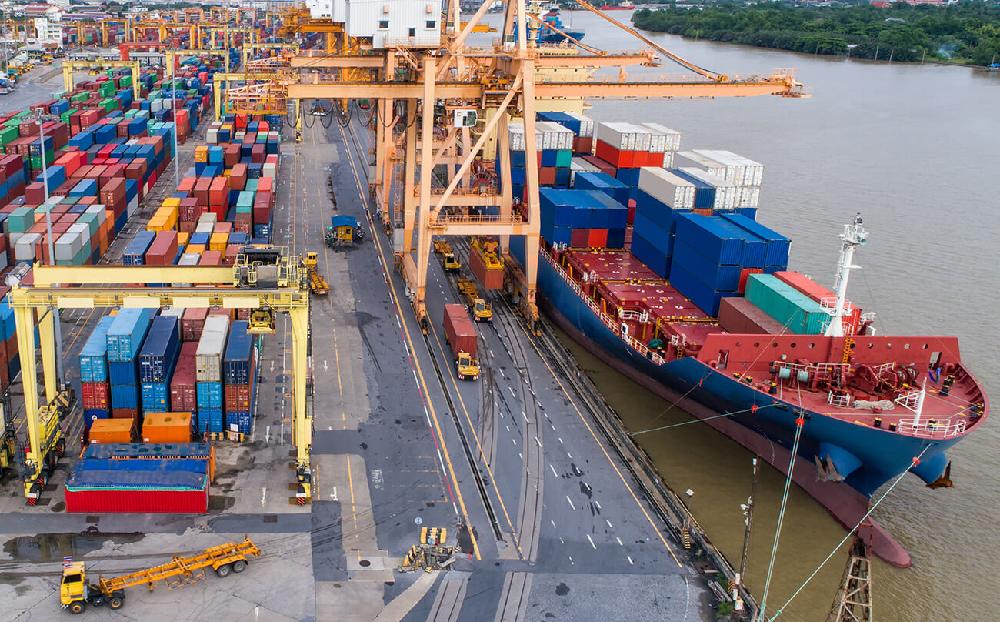
Do I need marine insurance?
Insurance provides the safety net required to protect the financial integrity of your personal and professional needs. If you are in the business of sending or receiving physical goods from one destination to another, insuring your goods and business interests inevitably becomes your priority.
Therefore, the simple answer to whether or not you need marine insurance is 'yes'. Read along to understand why that is so:
What is marine insurance?
‘Marine’ insurance is a colloquially used term for any kind of transport insurance, not just restricted to waterways. Whether your cargo or goods are moving over land, railways, or a combination of multiple transport modes, marine insurance provides cover for any loss or damage to your goods while in transit from source to the point of delivery.
Marine insurance can be purchased by sellers, buyers, and even financiers of the goods. So, whether you’re a small trader, moving materials interstate or a manufacturer sourcing raw materials or a large import/export house, marine insurance can protect your stock against any unforeseen eventualities.
Why marine insurance?
Depending on the mode of transport, distance, size, and value, your cargo could take days or months to get from one point to another. In the interim period, your goods are at the risk of damage due to accidents, improper packaging/ storage, seepage of water, mishandling by personnel and natural disasters such as floods, fire, and storms. They could also be lost due to theft, piracy, or be lost at sea. The carrier, in most cases, cannot be held liable for any damage or loss either. Hence, it becomes imperative to opt for additional security.
All natural calamities and human errors can be covered by marine insurance. There are various types of policies such as valued, unvalued, floating, time, voyage, etc. that you can choose from basis your needs, irrespective of whether the cargo is moving for domestic trade or across international waters.
Magma HDI, for example, provides comprehensive coverage through its Marine Cargo Open Insurance Policy. Whether you are sending a small parcel via airmail or a huge consignment via cargo, Magma HDI has your peace of mind covered.
In some instances, taking marine insurance may be obligatory basis the terms of the shipping or business contract. This helps bring in clarity over service delivery and safeguards the interest of all parties.
Alternatively, the insurance helps you gain a lot more control over the jurisdiction and language if in case the need for a claim arises. Imagine dealing with an insurer based out of Japan speaking a language alien to you while you are trying to get the information and paperwork through. It can be both time-consuming and exasperating.
In conclusion, marine insurance is extremely pocket-friendly. The premium depends on the value of the goods and the mode of transport. For a fraction of the cost of the shipment, you can secure your peace of mind. In case the need for a claim arises, a dependable insurer like us is just a phone call away.
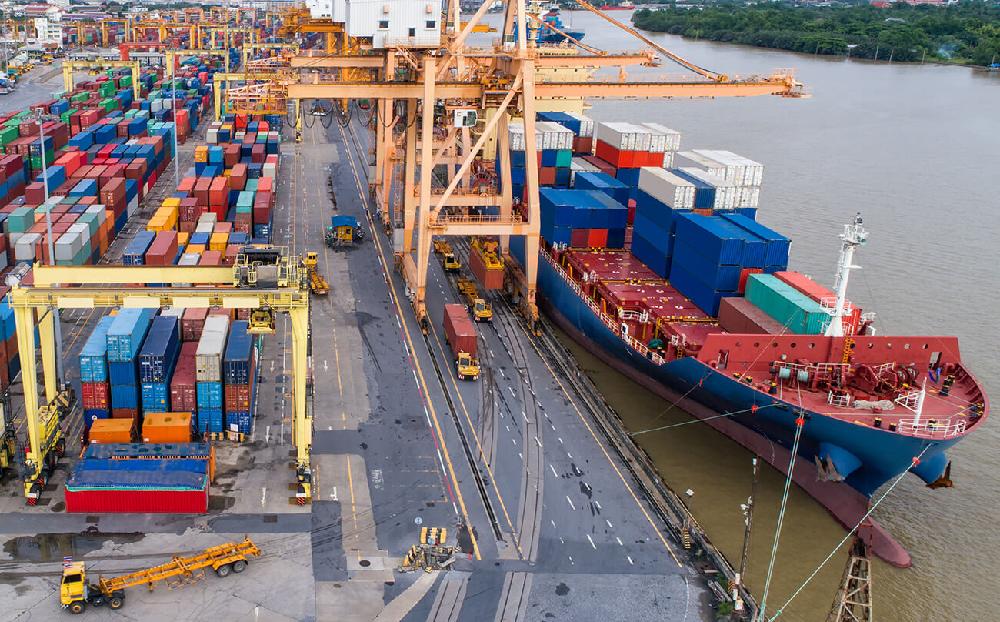
Events when your Marine Cargo insurance claim gets rejected
With the continuous rise in international trade, the volume of marine cargo is also increasing. Marine cargo has always been and will be an important component of international trade. With more and more businesses opting to transport their goods through marine cargo, the market is on the rise for shipping companies. This increase in business also increases the importance of having a comprehensive marine cargo insurance policy.
Irrespective of the fact how simple you might think a marine cargo insurance policy is, several claims get rejected every year due to one reason or another. You must, therefore, immediately take the necessary steps to ensure that your insurance claim does not meet the same fate.
Here is a list of the events when your marine cargo insurance claim can get rejected and how you can avoid them.
- 1. Insurance policy is not proper: - Not all marine cargo insurance policies cover for all types of damages. This is why you must have a comprehensive marine cargo insurance policy. If your policy does not cover the damage for which you have filed a claim, your claim will get rejected. Moreover, any changes in the constitution of your assignment or cargo might also lead to this rejection. You must, therefore, review for policy periodically and get it updated as and when required.
- 2. Mistakes in filing the claim: - Whether you have failed to file your claim within the requisite period or have filled the claim form incorrectly or have filed a claim under a wrong policy, the marine insurance companies will not hesitate in rejecting your application. Even, if they do not dismiss the claim outright, they might delay it for many days. Therefore, you must give this responsibility to an expert who has successfully filed such claims in the past.
- 3. Mishandling of goods: - If you have not packed the goods correctly or your personnel has been mishandling them, then the insurance claims filed thereon will be rejected by the insurer. You must, therefore, ensure proper packaging and careful handling of the goods on your vessel.
- 4. Perishable Goods: - Even if your insurance policy specifies that losses suffered due to delays will be compensated, it does not cover damages caused to goods of perishable nature. You must, therefore, check with your insurance company if such goods are covered under the policy or not, before accepting them.
- 5. Negligent Maintenance: - If you have not been paying attention to the maintenance of your vessel, marine insurance companies will certainly reject your claim. As your vessel will be plying in rough waters as well, so the chances of it suffering from damages are very high. These damages must be repaired as soon as possible to ensure the safety of the personnel as well as the cargo. You must, therefore, ensure that your vessel undergoes regular maintenance and follows safety and standard operating procedures. You should also keep a log of the repair and maintenance work carried out on the vessel, as it will help with your claim later on.
You must therefore carefully assess your needs, discuss them with your marine insurance company and only then subscribe to a comprehensive marine cargo insurance policy that caters to all your requirements.
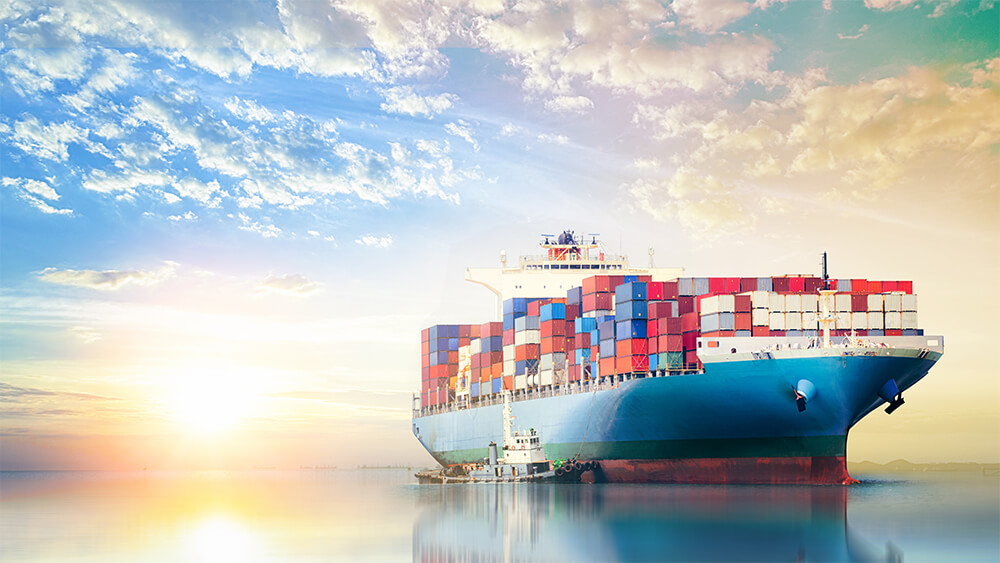
Hazards of shipping goods by the sea & how marine insurance can help
Ocean shipping is one of the most cost-effective means to ship out your goods to international borders. If a business acquires large bulks of orders from foreign customers wherein there are no quick delivery protocols, then shipping goods by the sea is the most viable option. However, there are some demerits attached to this practical advantage. Shipping goods via sea or ocean floor depends highly on factors like; weather, human-error, technical issues, and etc.
The hazards of not comprehending such factors might lead to disasters or accidents in the ocean, which further adds monumental loss to both business owners and the environment. This can be easily averted if you plan and get hold of proper marine insurance to combat the risks of shipping. Some of the better-known dangers related to sea shipping and how insurance can help tackle them includes;
- The occurrence of natural calamities - Perils never comes knocking on doors; they strike on decks without a single warning. Thunderous sea-storms, cyclones or tsunamis can destroy well set stocks and lives of those sailing on carrier ships. We cannot challenge the force of nature but what we can do is opt for marine insurance online to cover the losses, injuries, or damage caused during such natural disasters.
- Human Errors - There are certain dangers caused by man that could lead to a disastrous situation. Having untrained ship sailors or workers who load and unload goods with negligence and carelessness might create rooms for few accidents to occur in transit.
A reliable shield in the form of marine insurance to handle the mismanagement of shipping goods by workers would be a great help in such situations. - Geographical Hazards - Apart from natural distress signs, there are other forms of dangers present at sea in the name of geography. Try remembering Titanic, an unsinkable ship that sank nevertheless by hitting a massive iceberg. Big cargo ships going through narrow canals, icebergs, rocky shores or shallow coral reefs can get caught on sides or bottom, hence creating unimagined losses.
Mitigating such losses by having a rational marine insurance plan is one way, and another way is to have the ship properly tested for such hazards and assign a well trained, professional staff for commandeering the vessel. - Technological Issues - Such issues are more or less related to the ship's structure, engineering equipment, navigational tools, or motor engines. If the boat starts leaking oil in the ocean or one of the propellers is jammed due to long years of service, it could sustain significant damage to the goods on board.
To avoid such substantial financial losses; having a well-planned marine policy that can cover the ship's outer and inner structure after a thorough inspection is the right way to go.
Businesses work for profit and if your business requires delivering goods via sea or ocean, then why not keep yourself financially protected with a Marine Insurance cover and keep the profits intact.
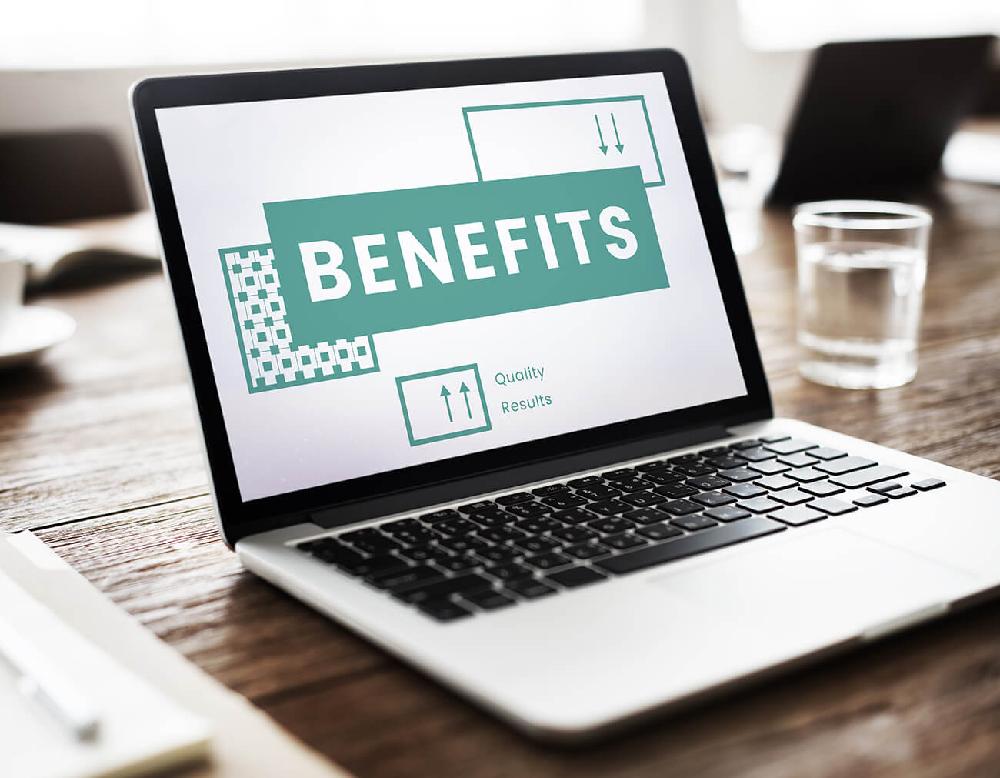
How NCB Works for Car Insurance?
Your car insurance comes with an annual premium, which helps you bear the financial losses that may arise due to an accident. While a claim-free year may seem like a waste of money since you paid the premiums but didn't really use the benefits, it's really not the case. Firstly, having insurance provides you with mental peace that in the case of any mishap, your finances will be covered. Secondly, your insurance provider offers you discounts on your next year's premium if don't make a claim in the previous year. This is what is known as a No-Claim Bonus (or NCB). Keep reading to find out more on how to maximize savings on your Private Car Insurance In India.
What should you know about NCB?
Car insurance companies reward vehicle owners who drive safely with no-claim bonuses. The bonus becomes applicable if you get through one policy year without making a claim. The company pays the discount on Own Damage (OD) premium for each claim-free year
Typically, the amount can vary from one insurer to another. But, discounts begin at 20% per year and can go up to 50% for five claim-free years or more.
How does NCB work?
When a policyholder does not file any claim in the past one year, a no-claim bonus is initiated by the insurer.
As a result of this, you’ll get a discount on your annual premium amount subject to increase with every succeeding year.
Things to remember about NCB in India
An essential feature of NCB is that it relates to the policyholder, not the vehicle as it rewards you for precautions taken on your end. So, you can retain your NCB even if you replace your existing vehicle. Other prominent features of a no-claim bonus are:
• Applies even when you switch the insurer
When you switch from one insurer to another, the no-claim bonus remains unaffected. For example, if you have a policy from company X for the last five years with no claims made and you shift to company Y later on, the company Y will give you a benefit of 50% discount on your annual premium as NCB.
• Bonus increases every year
The insurance companies calculate your no-claim bonus in the range of 20%-50% on an annual incremental basis.
• Doesn’t apply on third-party cover
Keep in mind that the no-claim bonus applies to the own damage or OD cover on your auto insurance. So, if you have only the third-party (TP) cover, you’re not eligible for NCB. However, if you have both OD and TP protection, you’ll receive the discount proportionately.
Protecting your NCB
As NCB policyholders, you are entitled to a maximum discount of 50% for five claim-free years. However, this discount expires if you make even a single claim. In such a case, to protect your NCB, insurers give you the option of opting for an add-on cover. It covers your claim in order to protect your NCB.
Another great hack to keep your NCB would be to avoid making claims for smaller damages.
Head over to Magma HDI to find out more about NCB available with your private car insurance in India.
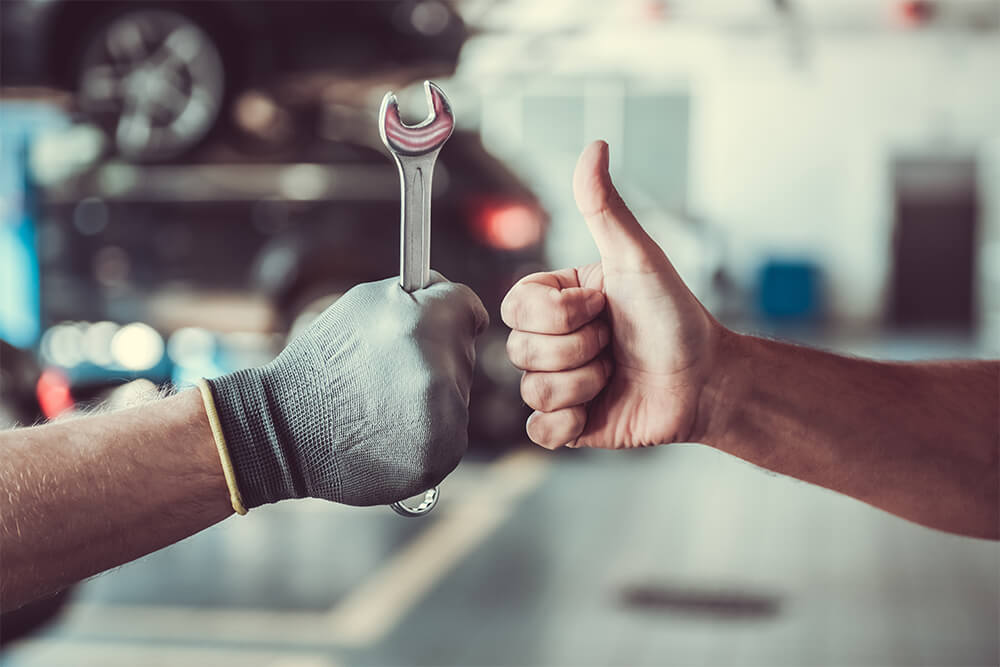
Monsoon Safety Checklist for your cars
Monsoons might not be the ideal time to drive around. The roads are slippery, and there are higher chances of meeting with an accident. However, the rainy season does not mean that you should stop driving altogether.
Instead, you should make sure that you follow some safety points to make sure that your driving experience is smooth and safe.
Here, we will look at some of the safety checkpoints that you should follow during monsoon. However, before we dwell on that, it is crucial to make sure that you get Car Insurance Online In India so that your car is covered in case of any unforeseen circumstances.
Fix those exhaust holes
Exhaust holes are made of iron, which means that they are vulnerable to rust. If there is a hole in your exhaust, then there are more chances for the rainwater to get in, besides the fact that a faulty exhaust is no food. Make sure that you have checked your exhaust for holes and other damages to ensure the smooth running of your car.
Cover your headlights
With time, your car headlights tend to develop spaces with them due to constant wear and tear. If they are damaged, then it is highly likely that the rainwater will get inside them, further leading to the damage. Make sure that you patch up these spaces so that your headlights are safe. Faulty headlights can lead to driving problems at night — something which no driver wants!
Check the door of your car
The doors in your car have a rubber attached to it. With constant usage, they may loosen up and make room for the raindrops to seep and ruin your interiors. To make sure that your interiors are as good as new, make sure to check on these doors now and then. If needed, replace them, as a repair might not be the easiest or the most convenient of ways.
Check your brakes
If you are driving around in rains, through clogged puddles, some water might just get deposited in your brake pads which can hinder the braking process and might lead to the deterioration of your brake pads. To get rid of the moisture, find a dry stretch of road and gently apply the brakes. The heat which comes out of friction will take the moisture away. If you find mud deposited on your pads, then go to a mechanic and get it clean. Remember that brakes are one of the most critical components of your car and you should always have them in good shape.
The way you treat your car is the way the car treats you. One cannot stress enough on the importance of taking care of vehicles. Magma HDI car insurance comes with affordable premium rates and features such as support for anti-theft devices, which can ensure that your car has a long and safe life.
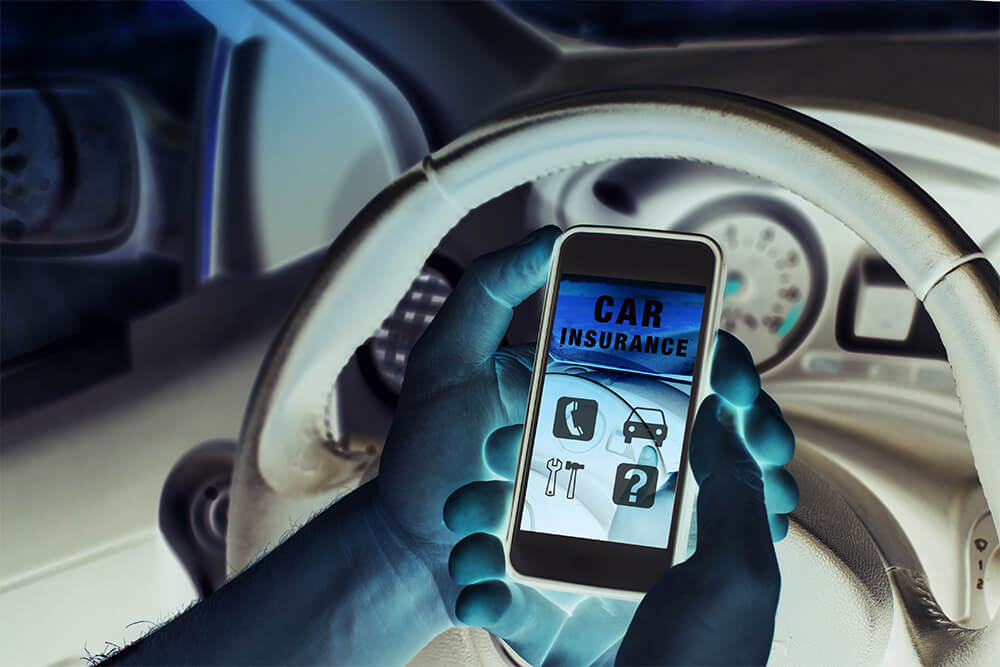
First-time car insurance buyer's guide
Buying your first car can be a little overwhelming. You work persistently and save your hard-earned money aside to buy the vehicle of your choice. However, keeping your vehicle safe and secure is a necessary next step after your purchase. Accidents occur anytime and anywhere. Having a comprehensive car insurance policy to back up those damages is a wise decision to make.
These days, you may buy a car insurance policy online or by contacting a service agent at your convenience and get your vehicle insured. With a sound knowledge of car insurance policies, you can optimize your purchase and savour great benefits. Read along to have a better grasp of your first-time insurance purchase.
Purpose of Car Insurance
'Use it or lose it' is a common motto on which car insurance policy runs; to benefit from it, you need to pay a yearly premium. On the off chance that you are lucky enough not to have gone through a severe road mishap, you lose the premium sum paid for insurance. Then again, you get a No Claim Bonus, which is a quite significant sum beginning from 20% of the premium in the first year to 50% in the sixth, which is the reason why you shouldn't go for minor harms claim.
Different Covers under Policy Terms
A well-framed car insurance policy covers the damages due to natural disasters like earthquakes, floods, storms, typhoons, etc. Secondly, it includes the loss incurred due to manual disturbances like riots, theft, terrorist attacks, fires, etc. Thirdly, you as the insured can access the personal accident cover for your family if you die or suffer disability post-collision or mishap. Some company even offers benefits to co-passengers at the time of the accident. Your insurance policy covers the third-party liabilities like if you accidentally damage a third person's car or he dies of injuries due to collision, your insurer will protect you from legal repercussions.
Additional Benefits and Covers
One of the pluses of having a comprehensive car insurance policy is that you get various additional perks. It may raise the premium amounts a bit, but the level of your car's safety is maximized. Some of the add-ons can be;
- Windshield or car glass cover
- Accident cover for a paid driver or unknown passenger
- Depreciation waiver
- Personal belongings damage/theft cover
Hiring an Insurance Advisor
During the brainstorming sessions of buying your first auto insurance, it is natural to get perplexed with different coverage benefits. A simple way to tackle that confusion is to get in touch with an insurance agent who is well versed with different company's policy premiums and covers. He can advise you along the way to look over your shortlisted insurers by comparing their proposed rates. He may also identify premium discounts for your first-time policy purchase.
Going for a comprehensive car insurance policy is prudent. It gives a well-rounded cover for your car. So, it's highly advisable to get in touch with your financial experts and buy a car insurance plan today.

Your car premium may be affected by your location!
Car insurance is a critical aspect of car ownership, providing financial protection in accidents, theft, or damage to your vehicle. However, the cost of car insurance can vary depending on several factors, including your driving history, car make and model, and age. Apart from this, location is also one of the most significant factors affecting car insurance premiums. Where you live plays a crucial role in determining the cost of your car insurance premium. The influence of location on car insurance is a complex issue that involves several factors. Insurance companies analyse these factors when determining your car insurance premium.
This blog post will explore how your location affects your premium so that you are aware of the correct policy before buying car insurance. Without any further delay, let's get started.
1. Crime rate
One of the most significant factors that can affect your car insurance premium is the crime rate in your area. Insurance companies consider areas with high crime rates a severe risk, as they have a higher incidence of car theft and vandalism. This increased risk means you may have to pay a higher premium if you live in an area with a high crime rate.
2. Population density
Another factor that can affect your car insurance premium is the population density of your area. Areas with high population densities have more traffic, which increases the likelihood of accidents. Therefore, if you live in an area with a high population density, you may have to pay higher car insurance premiums.
3. Weather conditions
The weather in your area can also affect your car insurance premium. Regions with harsh weather conditions, such as snow, ice, or heavy rainfall, have a higher risk of accidents. Therefore, if you live in an area with extreme weather conditions, you may have to pay higher car insurance premiums.
4. Road conditions
Poor road conditions, such as potholes or inadequate lighting, can also increase the risk of accidents. Insurance companies consider the road conditions in your area when setting your car insurance premium. If you live in a location with poor road conditions, you may have to pay higher car insurance premiums.
5. Laws and regulations
The laws and regulations in your area can also affect your car insurance premium. Some states have minimum coverage requirements, while others do not. If you live in a state with high minimum coverage requirements, you may have to pay higher car insurance premiums.
6. Local insurance market
Finally, the local insurance market can also affect your car insurance premium. Insurance companies may charge different rates in different areas based on the level of competition in the local insurance market.
Therefore, if you live in an area with a less competitive insurance market, you may have to pay higher car insurance premiums.
When setting your insurance rate, companies consider factors such as crime rates, population density, weather conditions, road conditions, laws and regulations, and the local insurance market. Therefore, it is essential to understand how your location can affect your car insurance premium to make informed decisions when choosing a car insurance policy. Explore and compare car insurance policies to find the right one that fits your needs optimally.
Click HERE to learn more about the benefits of purchasing car insurance
Disclaimer: The information provided above is for illustrative purposes only. To get more details, please refer to policy wordings and prospectus before purchasing a policy.
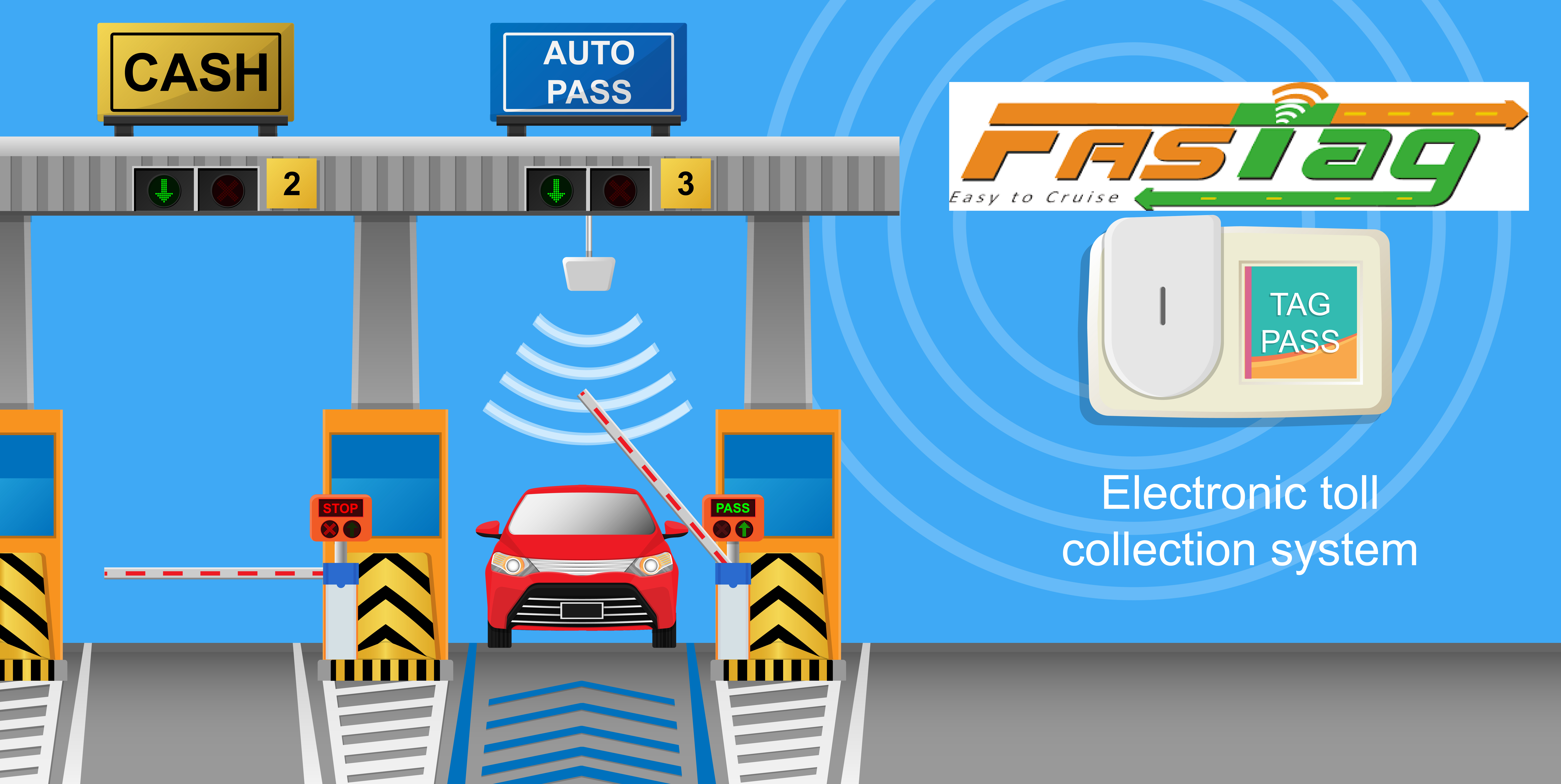
FASTag Uses and Benefits
Do you travel a lot by road? Are you tired of waiting for your turn at toll plazas on the interstate highways or expressways? Do you wish to get done with it as quickly as possible? If yes, then you must get a FASTag! As the name suggests, a FASTag is a tag which is a mean to ensure faster transit across toll plazas. The tag is placed on the windshield of the car and uses Radio Frequency Identification Technology. The tag is scanned by the tag readers placed at toll booths who then deduct the toll amount from the FASTag account. All toll plazas placed along the national highways are now using FASTag for payment of toll as per the guidelines of the government of India.
As the balance in FASTag reduces, the user needs to reload the balance in the linked wallet account or the linked bank account. By eliminating the need for cash payments at toll plazas, FASTag ensures a quicker and smoother flow of traffic.
The following reasons highlight how using a FASTag can help you save time on your journey: -
● Quick payment - As there is a FASTag affixed to your car, you wouldn't have to search your wallet for cash which ultimately reduces the duration of the transaction and your time is saved.
● Less fuel wastag - As you do not need to stop and restart your vehicle, less petrol or diesel is burned, which saves your fuel tank from draining quickly.
● Hassle-free recharge- You can easily recharge your FASTag using various methods like Internet banking, mobile wallet apps, NEFT, RTGS or even your credit and debit cards.
● Message alerts - Every time your FASTag is used, you get an alert SMS on the mobile number registered with the card which ensures the prevention of its misuse.
● Long validity- A FASTag is valid for five years, which means you need not worry about changing it frequently.
● No requirement of cash - The work of cash is taken over by the FASTag. Therefore, it eliminates the necessity of carrying cash for toll payments.
● Online portals- You can check the transactions made using your FASTag whenever you wish using specific web portals meant for the same.
Now, onto some Frequently Asked Questions: -
How to get a FASTag?
To buy a FASTag, you can ask the toll plaza employee for their sales department, or contact authorized agencies or banks that sell them. Many platforms offer car insurance quotes online and sell FASTag as well.
How much does a FASTag cost?
Generally, a FASTag can cost you around two hundred rupees for the purchase, which excludes recharge expenses.
Where is it placed?
FASTags are affixed on the windshield of the car in a very specific manner that allows the scanners placed at the toll plaza to scan it.
How to know if your card has been used?
As stated in the above benefits, a text message is delivered to the registered mobile phone when the FASTag is used. This is a sort of confirmation to the owner that payment has been made.
Do you need to maintain a certain balance?
You don't need to maintain a balance for sure, but yes there is a minimum value for a top-up of the tag which amounts to a hundred rupees.
Where is a FASTag valid?
Throughout the country, a FASTag can be used to make payments at toll plazas regardless of the city or state.
While getting FASTag will help you zoom seamlessly on the highways, do remember to check car insurance quotes online to get protection against possible accidents and incidents while on the road.
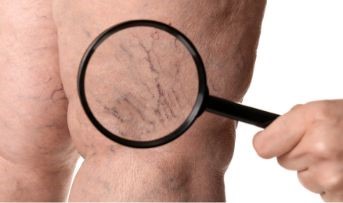
Do you experience frequent swelling in your legs? These can be the probable reasons
Medical issues are being observed as a rising problem, mainly because of drastic lifestyle changes, improper nutrition, and irregular physical activities. The best way to tackle medical adversities is by prioritising your health and never neglecting the symptoms that your body throws at you. Most health conditions develop over time due to your habits, while some are even hereditary.
One common issue is swelling in the legs, feet, and ankles. There can be multiple reasons for swelling, including physical injuries, medicinal reactions or allergies, and underlying conditions like cholesterol, diabetes, etc. If you see a frequent swelling pattern in your legs for a month, seek medical help, as it may be something to worry about. Leg swelling happens for two main reasons - edema and inflammation.
Let's explore more about them.
Factors causing edema
Several factors contribute to edema or fluid buildup in one or both legs. Here we discuss some major factors that require immediate medical assistance.
1. Congestive heart failure
When the heart is too weak to pump blood to body parts, this condition is termed congestive heart failure. Such a reduction in blood supply leads to fluid buildup, especially in the legs. Besides swelling, a person may also experience trouble breathing and constant tiredness.
2. Veins
Two vein issues can cause leg swelling and other problems in the body. Those are:
● Clotting in veins: A blood clot can form in any vein in your leg, which can break off and easily travel to your lung. This can lead to a life-threatening situation if left unnoticed. Other than swelling, if you also experience constant leg pain, cramps, or red or blue skin, immediately visit your doctor, as these might be the symptoms of vein clots.
● Chronic venous insufficiency and varicose veins: A person suffers from these conditions when the valves inside the leg veins cannot maintain the blood flow up toward the heart. Instead, the blood gets collected in pools, resulting in varicose veins. Other than swelling, you may also experience achy legs, pain after sitting and standing for too long, and dry, irritated skin.
If you experience these problems, visit the doctor to start your treatment.
3. Reaction from certain medication
Not every medication suits our bodies. Some cause side effects such as swollen legs, hair fall, irregular menstrual cycles, etc. Pain in the legs can also be a symptom of a medicine reaction. Notice the change in your body and talk to the doctor about getting alternative medicines that have zero to minimal side effects.
Factors causing inflammation
Some of the common causes that lead to inflammation in our body are listed below:
1. Arthritis
Anyone can develop arthritis at some point in their life. Due to the constantly changing environment, it is open to older adults. Diseases like gout, knee bursitis, osteoarthritis, and rheumatoid arthritis are becoming more common among people of all ages as they ignore proper care of their bodies, diet, and physical well-being.
2. Sprains and broken bones
Getting broken bones or twisting your ankle also causes swelling. It's our body's natural reaction to the injury as it moves the fluid and white blood cells into the injured area and releases the chemicals that speed up recovery. Some of the common injuries are mentioned below:
● Achilles tendon rupture: It is our body's largest tendon, and it connects the calf muscles to the heel bone. When it tears, you might experience a sharp pain in the back of the ankle and lower leg. The pain is so intense that a person may be unable to walk. ● Cellulitis: It's a severe infection that happens when bacteria get in through the crack in the skin. It is most common in the lower leg and ankles. Other than swelling, a person may experience tenderness, pain, a reddish skin area, blisters, and dimpled skin.
These were a few common reasons for frequent swelling in the legs. Your legs must be in the best shape to ensure pain-free and smooth movement. Give proper rest to your legs, and indulge in 10-15 mins of daily exercise like jogging or brisk walking.
Irrespective of the medical issues, one should always visit the doctor to rule out any worst outcome. Undoubtedly, any treatment can cost you heavily to your pocket. Therefore, getting health insurance from the best health insurance company in India to cover your medical expenses is ideal. Such insurance policies can help you in your time of need.
Click HERE to buy insurance from the best health insurance company in India.
Disclaimer: The information provided above is for illustrative purposes only. To get more details, please refer to policy wordings and prospectus before purchasing a policy.
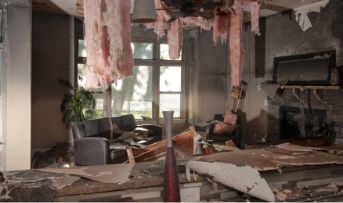
Expert's guide on preventing fire outbreaks at home
A home is a place of comfort, protection, and security, but a fire breakout can rapidly turn it into dust. Various sources, including electrical failures, kitchen accidents, and malfunctioning appliances, can start fires. A fire breakout can be disastrous, causing significant damage to your property and personal items and possibly resulting in death. As a homeowner, you must take the essential precautions to prevent fires and safeguard the safety of your property and loved ones.
This blog discusses "expert's advice on preventing fire outbreaks at home." We'll review some of the best ways to protect your home from fire threats and the importance of obtaining the best home insurance in India. Following these suggestions and purchasing the appropriate house insurance coverage, you can protect your home from fire damage and enjoy peace of mind. So, without any delay, let's begin!
1. Install smoke alarms
Installing smoke alarms is one of the most effective strategies to avoid home fires. Smoke alarms detect smoke and notify you during a fire. This will help you to take the required precautions to prevent further damage. Install smoke alarms in each room and check and replace the batteries regularly.
2. Be careful of faulty appliances
Faulty appliances are one of the leading causes of home fires. Appliances must be handled with care and inspected regularly for flaws or damage. Always follow the manufacturer's instructions and use the appliances in accordance with their recommendations.
3. Check electrical wiring
Faulty electrical wiring is another major cause of home fires. Inspect your home's electrical wiring regularly for signs of wear and tear. Repair or replace any damaged wiring or electrical components immediately to avoid fire hazards.
4. Cook safely
Cooking mishaps are a significant cause of home fires. Practicing safe cooking skills and using caution when using the stove or oven is critical. Always keep combustible things away from the cooking area, and never leave the kitchen unattended when cooking.
5. Keep flammable objects away
Keeping flammable objects away from heat sources is critical to prevent home fires. Ensure that all flammable materials, such as cleaning solutions, paints, and petrol, are kept securely away from any heat source.
6. Have an emergency plan
Having an emergency plan can go a long way toward preventing home fires. Prepare an exit plan for a fire, and teach your family how to use fire extinguishers.
7. Obtain the best home insurance in India
The best home insurance in India is essential to protect your home from fire damage. A comprehensive house insurance policy covers fires, natural catastrophes, theft, and other unanticipated events. You get compensated for your loss and are relieved from financial stress due to the fire outbreak.
8. Conduct regular inspections
Inspecting your home for fire hazards regularly will assist in discovering potential threats and avoiding fire outbreaks. Periodically inspect your home, particularly the kitchen and electrical wiring, and take the required precautions to prevent fire threats. Install water sprinkler mechanisms, smoke detectors, and fire alarms to ensure safety against fire catastrophes.
Every homeowner is responsible for preventing fires in their homes. A fire breakout can be disastrous, causing significant damage to your life, property, and personal items. By following the expert's advice and taking the required precautions, you can ensure that your home is safe from fire threats and that you live in a secure atmosphere. In addition to these precautions, obtaining the best home insurance in India is necessary. A comprehensive house insurance policy covers fires, natural catastrophes, theft, and other unforeseen events, providing financial security and peace of mind. You can research alternatives and select the best home insurance in India to meet your requirements.
Click HERE to know more about how you can purchase the best home insurance in India and its benefits.
Disclaimer: The information provided above is for illustrative purposes only. To get more details, please refer to policy wordings and prospectus before purchasing a policy.
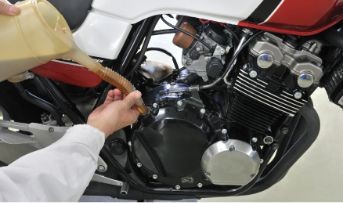
Here’s when you should change your bike’s engine oil
It is always necessary to change the engine oil timely to improve the performance and sustain the long life of your bike. However, many people ignore the importance of quality engine oil, which severely damages the engine and the bike's overall performance. Therefore, in this post, we'll discuss when you should change your bike's engine oil and why it is required to keep it in ideal condition.
When it is time to change the oil
To know when to change the bike's oil, you have many indicators that you need to keep an eye on. Your bike gives you several alerts indicating issues with the engine due to low oil levels or the need for replacement. You might hear weird sounds when giving ignition or revving your bike. Low oil level or poor quality oil can severely damage the engine and leave you to bear a massive repair and maintenance cost.
Below are some signs that will help you change the oil on time.
1. Read the manual
It might be possible that every bike has a different requirement when dealing with the engine. Read the bike manual to understand the guidelines and specific requirements for your bike. You can also learn about engine type, driving conditions, climate, etc.
2. Oil level
Check the oil level in your bike with the help of a dipstick. If you find the oil below the given level, you should look to change the oil.
3. Oil colour
You'll find a clear orange colour. As time passes and you use the bike regularly, the oil turns black due to impurities, wastes, and remains. When you find the oil dirty and get a foul smell, it is time to change it.
4. Engine performance
When you don't change the oil, you can't expect the desired performance from your bike. It is the case when your bike's oil turns black, and you should change it at the earliest. If left unchanged, you'll keep getting sluggish acceleration, reduced fuel economy, and poor performance.
5. Mileage
Generally, manufacturers suggest a rider to change the oil every 3,000–5,000 km. Changing the oil is always advisable when you cover this distance on your bike.
6. Unusual engine clatters
Untimely oil replacement might increase friction and wear on engine parts, leading to unexpected noises. So, if you hear any noise or clashes, you must change the oil. On the other hand, if you use your bike for high-performance racing, off-road biking, or long trips, you should always look to change the oil timely. These tours can strain your bike's engine and cause its performance to go down.
Points you must be aware of about the oil change
● Synthetic oils perform longer instead of the normal engine oils. You get better mileage and performance from your bike's engine. Also, thoroughly read the user manual to get clarity on oil changing.
● Regularly keep checking the oil level with a dipstick. Look at the colour and density of the oil.
● Visit the local garage and inspect your bike's engine for an oil change.
● Always use the best quality engine oil recommended by the bike manufacturer to avoid harming the engine and its parts.
It is evident to regularly monitor your bike's engine oil to enjoy a smooth riding experience and ensure the engine's longevity. Along with checking the engine oil's quality, you must also look for reliable bike insurance. Accidents can occur at any point. Therefore, you must protect your asset with comprehensive coverage. So, insurance and a timely oil change are two basic requirements that must be fulfilled on time for a stress-free and enjoyable riding experience.
Click HERE to buy reliable bike insurance.
Disclaimer: The information provided above is for illustrative purposes only. To get more details, please refer to policy wordings and prospectus before purchasing a policy.
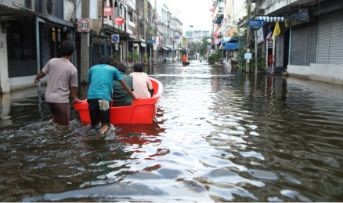
Why motor insurance is not enough: The importance of fire insurance for your vehicle
When protecting your vehicle, having a motor insurance is a legal requirement in most countries, including India. However, many vehicle owners mistakenly believe that motor insurance is enough to cover all kinds of damages, including those caused by fire. Unfortunately, this is not the case. Fire accidents can cause significant damage to your vehicle, leaving you with a hefty repair bill. This is where fire insurance comes to your protection. Fire insurance is a type of insurance that covers damages caused by fire, including damages to your vehicle.
This blog will discuss the types of damages fire insurance covers, the cost of fire insurance, and how to obtain fire insurance for your vehicle.
1. Motor insurance does not cover fire damage
While motor insurance covers damages caused by accidents, theft, and natural calamities, it does not cover damage caused by fire. If your vehicle catches fire, you cannot claim any compensation from your motor insurance policy. On the other hand, fire insurance is specifically designed to cover damages caused by fire.
2. Fire accidents are common in India
India witnesses a high number of accidental and intentional incidences of fire annually. Fire can spread quickly and cause significant damage to your vehicle in minutes. Having fire insurance for your vehicle will protect you against the financial impact of such accidents.
3. Fire insurance covers the cost of repair or replacement
If your vehicle is damaged by fire, fire insurance will cover the cost of repair or replacement, depending on the extent of the damage. This means you will not have to bear the entire cost of repairing or replacing your vehicle's parts, which can be a significant financial burden.
4. Fire insurance is affordable
Contrary to popular belief, fire insurance is not expensive. The cost of fire insurance for your vehicle will depend on various factors, such as the age, make, and model of your vehicle, as well as the extent of coverage you choose. However, fire insurance is a small price compared to the potential cost of repairing or replacing your vehicle after a fire accident.
5. Fire insurance provides peace of mind
Having fire insurance for your vehicle provides peace of mind, knowing you are protected against the financial impact of fire accidents. This is especially important if you rely on your vehicle for your livelihood or have invested significant money in purchasing or modifying your vehicle.
6. Fire insurance covers damages caused by riots
In a situation of riots and civil disturbances, vehicles are often targeted and damaged by fire. Fire insurance covers damages caused by such incidents, providing financial protection to your vehicle.
7. Fire insurance covers damages caused by electrical faults
Electrical faults can also cause fire accidents in vehicles. Fire insurance covers damages caused by electrical faults, providing financial protection against such incidents.
8. Fire insurance is easy to obtain
Obtaining fire insurance for your vehicle is easy and uncomplicated. You can purchase fire insurance as an add-on to your motor insurance policy or as a standalone policy from any insurance provider. Purchasing it is quick and hassle-free, and you can do it online from the comfort of your home.
While motor insurance is mandatory by law in India, more is needed to protect your vehicle against all kinds of risks. Fire accidents can cause significant damage to your vehicle, leaving you with a hefty repair bill. This is why it's essential to have fire insurance for your vehicle in addition to your motor insurance India. Fire insurance provides comprehensive financial protection against damages caused by fire, riots, electrical faults, and other such incidents.
Click HERE to learn more about motor insurance India and its benefits.
Disclaimer: The information provided above is for illustrative purposes only. To get more details, please refer to policy wordings and prospectus before purchasing a policy.

Here are the different types of back pain you must be aware of
Back pain is one of the most common problems everyone faces across the length and breadth of the country. Some people may face a dull pain in their back now and then, while for some, it may be constant. Others may experience sudden and excruciating pain in their back, that they may be unable to sit or walk properly.
The leading causes of back pain are a fall, an accident, lifting a heavy load, or age-related factors. Sometimes a medical condition can also result in back pain. The treatment varies with the category of back pain you are suffering from. Hence, let us first understand the different types of back pain.
1. Cervical pain
The cervical region in our body is the vertebrae of the neck. When you suffer from pain in or around your spine, it is a case of cervical pain beneath your head. It is a common type of pain that can last a few days to several years. The common causes of cervical pain include poor and slumped posture, physical strain, mental stress, herniated disc, tumors, and other health conditions.
In Cervical pain, you may feel the most axial neck pain in your neck or radicular neck pain that shoots to other body parts, such as your shoulders or arms. Cervical pain is not very serious and can be treated with treatments such as exercise, stress management, and medicines for pain.
2. Thoracic back pain
Thoracic back pain is the pain in your upper back. The main symptoms include fever, loss of weight, nerve pain or numbness in the legs or lower body, physical trauma, noticeable deformity, severe stiffness, and constant severe pain that does not go away even after a change in sleeping or sitting position.
Thoracic back pain should not be ignored because the upper portion of the spine is connected to the ribs that protect your heart and lungs. You should immediately see a doctor if you experience any of the above symptoms for a long time.
3. Middle back pain
Middle back pain occurs below your rib cage but above the lumbar spine region. You may feel similar symptoms, such as fever, chills, weight loss, dizziness, etc., as in thoracic back pain. However, sometimes the symptoms can be vague, and you cannot easily diagnose them.
Middle back pain is caused due to several reasons, such as obesity, stress, anxiety, lack of physical activity, smoking, and pregnancy.
4. Lower back pain
Lower back or lumbar pain is common in people over 30 years of age. It is caused by a strain on muscles or tendons in the back. Arthritis of the spine is also a common cause of lower back pain. The pain can be mild to severe, leaving people unable to walk, sleep, work, and do their daily activities properly.
The common causes of lumbar pain are obesity, back injuries and accidents, lifestyle, mental health, diseases, and age. Such pain can come and go suddenly, especially after you bend abruptly to pick up something or during a sport. Medications and physical therapy can treat it, while sometimes surgery may also be required to cure it.
Back pain is becoming common even among youngsters, making it a cause of concern. Excessive junk food intake causing obesity, a lifestyle with no physical activity, stress and anxiety, smoking, etc., are primarily causing back pain in the younger generation.
Furthermore, this problem is alleviated with age, injuries, and accidents. A good health insurance policy can be very helpful in case you require a long treatment or surgery due to prolonged back pain problems. It will make you financially secure and stress-free, even if your treatment lasts for several years.
Click HERE to buy the best health insurance in India.
Disclaimer: The information provided above is for illustrative purposes only. To get more details, please refer to policy wordings and prospectus before purchasing a policy.
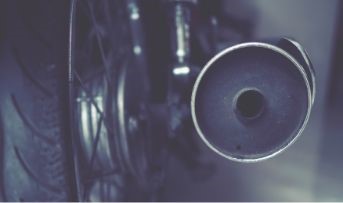
Do you see black or white smoke from your motorcycle's muffler? These can be the reasons
When you notice black or white smoke coming out of your motorcycle's muffler, it is a sign that something is not working correctly. The smoke's colour makes it possible to tell what kind of problem the engine faces. White smoke typically indicates the presence of coolant or water mixing with the fuel in the combustion chamber. Whereas black smoke typically indicates a vibrant air/fuel ratio. The causes of black or white smoke can vary.
The following are some common causes of black or white smoke coming from a motorcycle's muffler:
Black smoke
1. Fuel injectors
The ability of the fuel injectors to supply the engine with the appropriate amount of fuel may be compromised if they are clogged or broken. Black smoke can result from incomplete combustion caused by a shortage of fuel.
2. Spark plugs
Black smoke is produced when the air/fuel mixture does not burn completely due to a damaged spark plug.
3. Inappropriate fuel blend
Black smoke can result from incomplete combustion, caused when the fuel combination is vibrant or too much fuel in the air/fuel mixture. This may occur if the motorcycle uses power with a more excellent octane rating than the engine needs.
4. Air filter
Black smoke may result from the engine receiving less air than required due to a blocked or dirty air filter. A vibrant air/fuel mixture caused by a dirty air filter can result in incomplete combustion.
5. Carburetor
Black smoke can also be produced by a vibrant air/fuel mixture from a dirty or faulty carburetor.
6. Exhaust system
Black smoke can result from an accumulation of exhaust gases brought on by a damaged or blocked exhaust system.
7. Carbon accumulation
An engine's combustion chamber, valves, and pistons may accumulate carbon deposits over time. These carbon deposits can interfere with combustion and lead to black smoke.
8. Oxygen sensor malfunction
The oxygen sensor determines how much oxygen is in the exhaust gases. The oxygen sensor may be unable to provide the engine control module with reliable readings if it is broken or faulty. This can cause the engine to receive insufficient fuel, leading to black smoke.
White smoke
1. Overheating
If the engine operates excessively, the coolant may boil and combine with the fuel in the combustion chamber. Additionally, this may cause the silencer to release white smoke.
2. Incorrect fuel blend
White smoke may result from an excessively lean fuel combination or an air/fuel mixture that contains too much air. This might occur if the motorcycle is powered by fuel that doesn't meet the engine's octane requirements.
3. Transmission fluid
A motorcycle with an automated transmission may emit white smoke from the silencer if the transmission fluid is burning.
4. Defective fuel injectors
The engine may not receive the proper amount of fuel if the fuel injectors are not operating correctly. White smoke can result from incomplete combustion caused by a lack of power.
5. Coolant leak
Coolant can leak into the combustion chamber if the engine's head gasket is damaged or the cylinder head is cracked. White smoke will flow out of the muffler when the engine runs because coolant and fuel will combine.
6. Water in the fuel
White smoke may emerge from the silencer if the fuel contains water. This may occur if water has collected in the motorcycle's fuel tank due to prolonged sitting.
7. Defective glow plug
The glow plug heats the combustion chamber, which helps the engine start. White smoke may result from incomplete combustion caused by an inaccurate glow plug.
A motorcycle's muffler may emit black or white smoke, indicating several engine issues. It is essential to determine the root of the problem and take quick action to fix it to stop the engine from suffering additional damage. Taking your motorbike to an expert mechanic for diagnostic and repair is advised if unsure of the cause. Motor insurance provides financial security in the case of an accident or damage to your vehicle. It is advisable to buy motor insurance online as it eliminates the need for paperwork and mediators, which may result in cost savings on insurance premiums.
Click HERE to buy motor insurance online.
Disclaimer: The information provided above is for illustrative purposes only. To get more details, please refer to policy wordings and prospectus before purchasing a policy.


